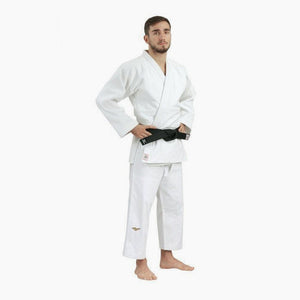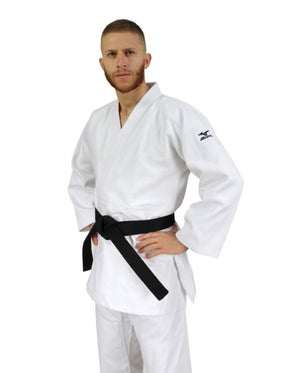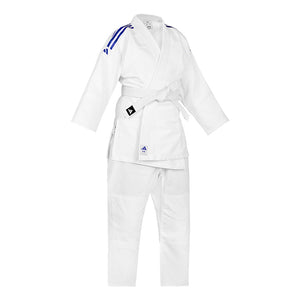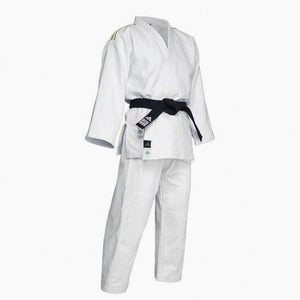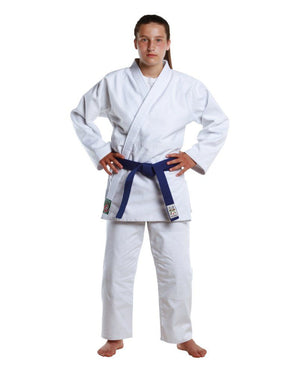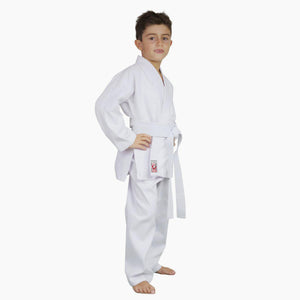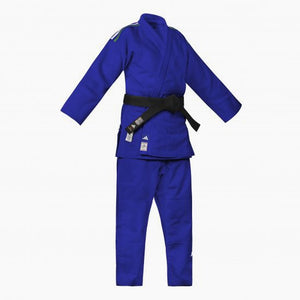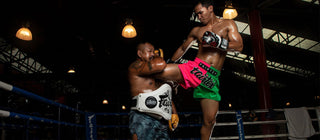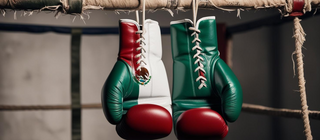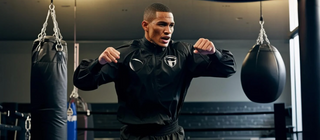Judogi: buying guide
"Jūdō is the most effective way to use physical and mental strength. Training in the discipline of jūdō means attaining perfect spirit knowledge through attack-defense training and assiduous effort to achieve physical-spiritual improvement."
Jigoro Kano
Judo is a martial art that relies on fast and precise movements that require intense training. Appropriate clothing is therefore very important. In this discipline, protection is not mandatory, but it is sufficient to wear the judogi, the typical uniform used in judo, and the waist belt.
The Judogi is the typical clothing of every judoka. Like most uniforms in martial arts, it consists of an open jacket (uwagi), Trousers (zubon) and a colored belt (obi). There should be no zippers, pockets or buttons.
Technical information about the Judogi
The fabric of judogi is usually composed of. cotton, sometimes with percentages of polyester. These materials allow for a uniform lightweight e durable. The weight of the fabric (its weight per square meter) can vary, on average from 300 g/sqm to 700 g/sqm. The higher the weight, the higher the cost of the judogi.
Usually judogi have some reinforced points, particularly in the knee, collar and shoulder areas. This allows both to avoid tears in the parts most exposed to projections and to have a softer point of impact for the joints and mitigate the effects of falls. Cotton fabric tends to shrink slightly with washing: to minimize this, it is therefore important that the judogi be made of pre-washed cotton or a special ripstop fabric that does not shrink. The most commonly used color for uniforms is white, but blue judogi are also available. The predominantly plain design can be embellished with embroidery on the shoulders and legs.
Advice for those who must choose their first judogi
If you are getting into this discipline, it is not necessary for you to purchase a professional, competition-approved judogi with heavy fabrics right away. A uniform made of pre-washed cotton, with a weight on the 300 gsm and without homologation will do just fine. There are several brands of judogi on the market. In our opinion, the judogi Adidas Are among the best on the market.
Advice for those who need to buy a Judogi for competition
If you need a judogi for competition, make sure it is approved. Among the major homologations you can find IJF (International Judo Federation) and FIJLKAM (Italian Judo Wrestling Karate Martial Arts Federation). You will find wording with the homologations of the judogi at the time of purchase.
Usually judogi are white in color, but blue judogi may also be used to distinguish the two athletes in competitions.
Judogi, what size?
The size should be chosen according to the athlete's height. When you have found a pattern that suits you, make sure the fabric is pre-washed, and buy the size that is closest to your height (rounded up), or at least a size slightly larger. If, for example, you are 175 cm tall, buy a 180 cm judogi.
How much and how to wash the judogi
The uniform should be washed after each use to get rid of sweat. You can wash the judogi safely in the washing machine, avoiding exceeding 30-40°.
Judo belts
As in other martial arts, an athlete's rank can be recognized by the color of his or her belt. It starts with the white belt for all beginners, and then moves, in order, to yellow, orange, green, blue, brown, black (divided into various Dan), white/red, and red. The belt also holds the jacket to the body, and is tied at the waist with a flat knot. In this case, quality is not as important as for the Judogi. You can buy a judo belt at a price of about 4 euros. Professional silk belts (black, red and blue) are considerably more expensive, about 20 euros.
Trivia
Judo is a Japanese martial art that originated in 1882 with the Kodokan foundation of Professor Jigoro Kano. Among the most popular and appreciated martial arts in the world, the term means "way of kindness." Its purpose is to make the best use of both body and mind.


